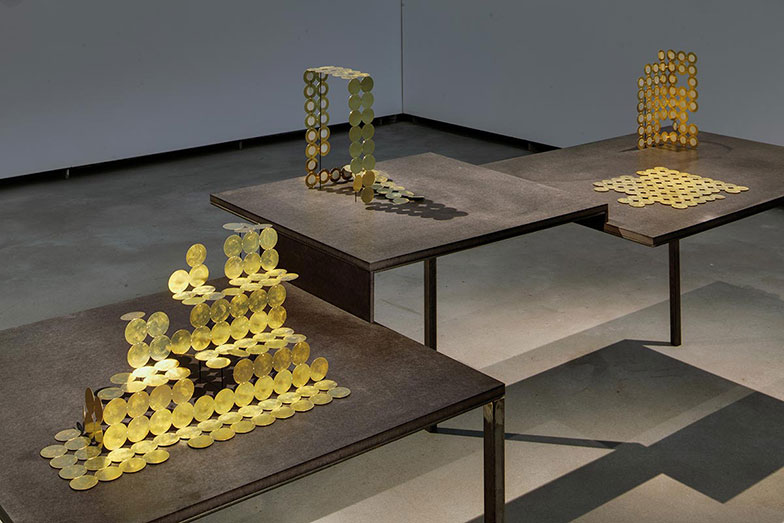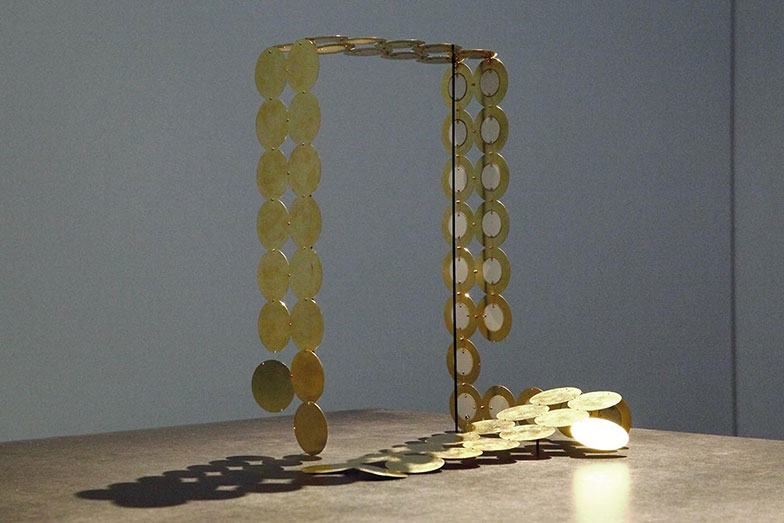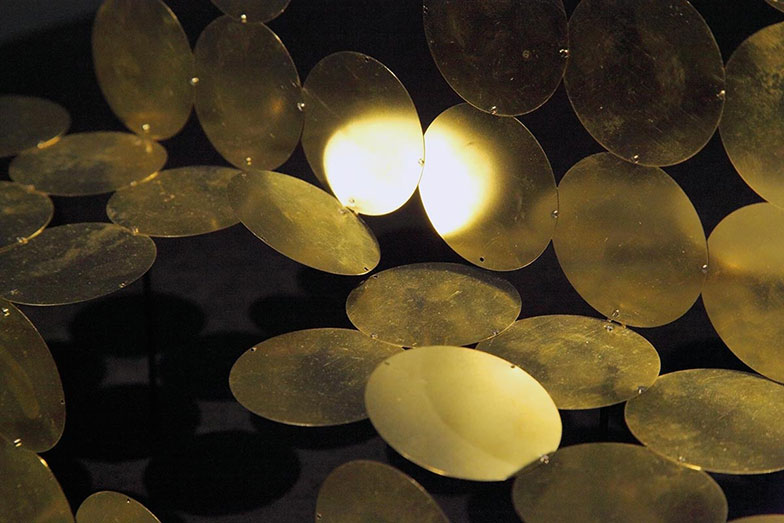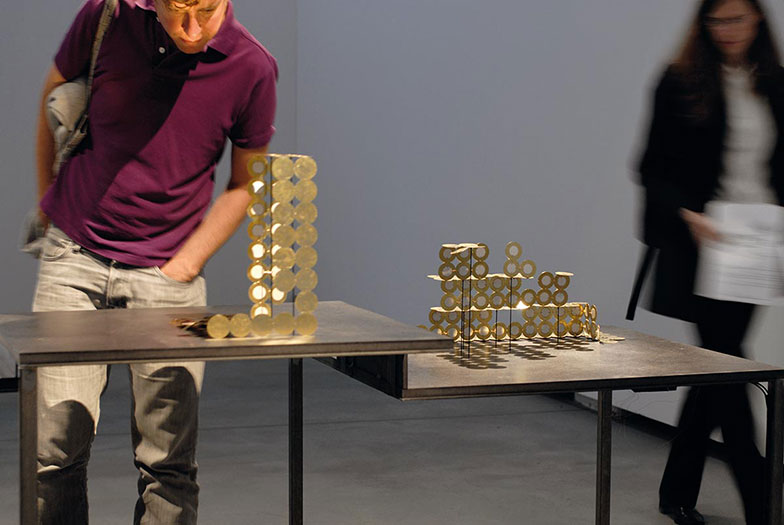Sound installation
(piezoelectric discs, audio player, waxed wood and metal stand. Audio loop: 1'33. Dimensions: 290 x 90 x 120 cm)




The installation features four assemblages of piezoelectric discs that act as sound diffusers, to play one of the very first musical recordings made in Peru, originally on a wax cylinder. The Mochica music that can be heard through the structures was captured in 1910 by the German-Peruvian ethnologist Hans Heinrich Brüning, who was also an avid collector of pre-Columbian artefacts and the founder of a museum. The vibrating models echo the Golden Room in the museum that bears his name today, and the treasure rooms found in other ethnographic museums - also reminiscent of the European myth of El Dorado
Thanks to the Berlin Phonogram Archive for providing the recording Serranita, by Hans Heinrich Brüning (1910, Peru).
Made possible thanks to the Netherlands Foundation for Visual Arts, Design and Architecture, the Conseil Général de la Moselle, France, the Berlin Phonogramm Archive and Rachel Carey.
Quatre assemblages de disques piézo-électriques fonctionnent comme des diffuseurs sonores en entrent en vibration. L'un des tout premiers enregistrements réalisé au Pérou (Serranita, Hans Heinrich Brüning, 1910) peut être entendu au travers de la structure.
Merci à l’Archive de Phonogrammes de Berlin pour l’enregistrement Serranita par Hans Heinrich Brüning réalisé au Pérou en 1910. Réalisé avec le soutien du Fonds voor beeldende kunsten, vormgeving en bouwkunst, Amsterdam, Pays-Bas, du Conseil Général de la Moselle, France, de l’Archive de Phonogrammes de Berlin et de Rachel Carey.